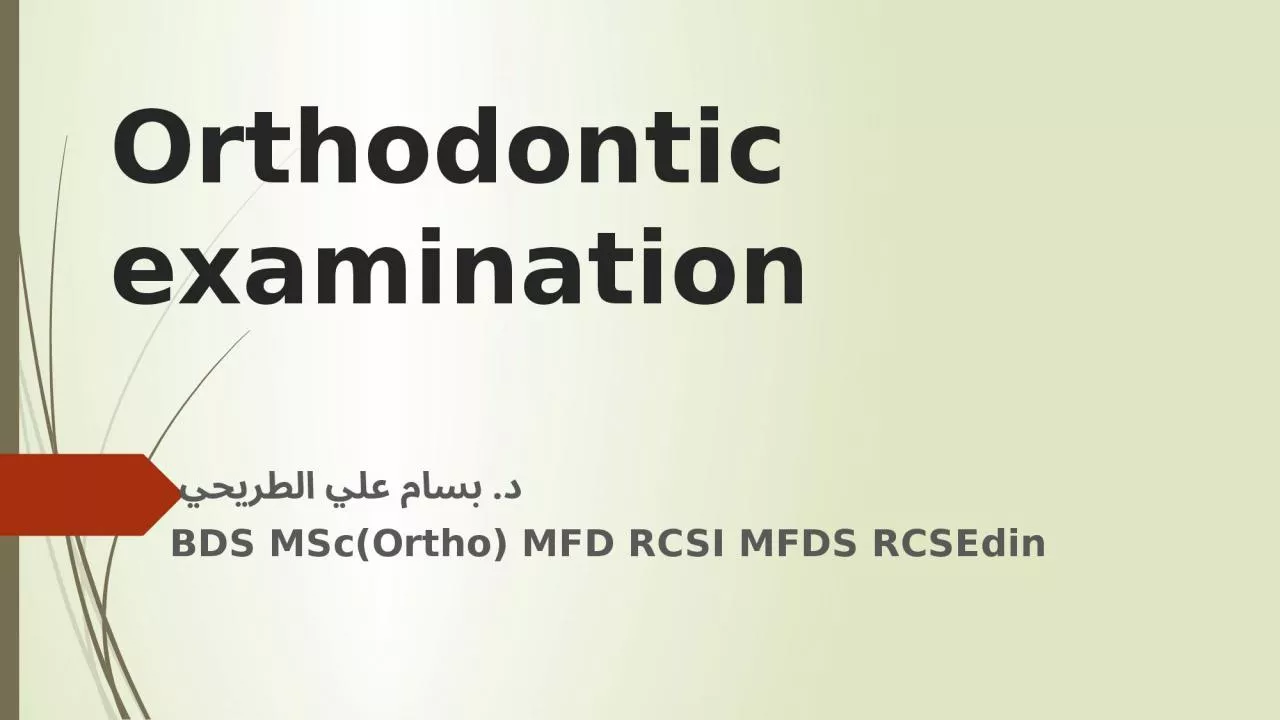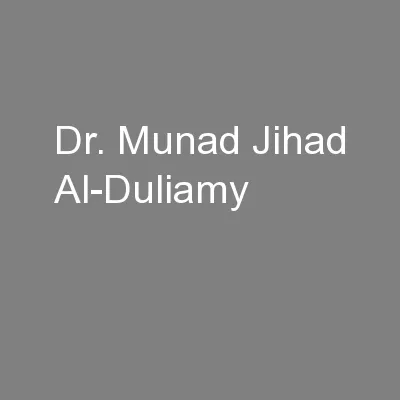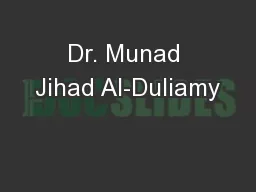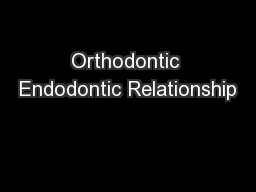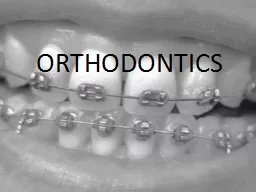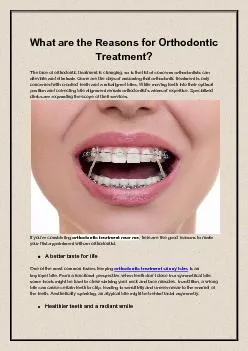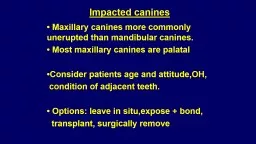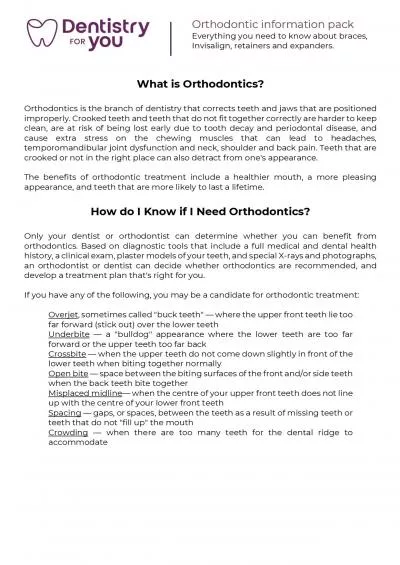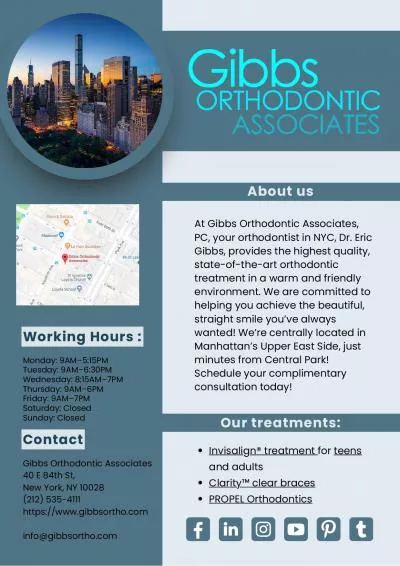PPT-Orthodontic examination د. بسام علي الطريحي
Author : CottonCandyQueen | Published Date : 2022-08-01
BDS MScOrtho MFD RCSI MFDS RCSEdin I General Examination II Cephalic and Facial Examination III Examination of The Soft Tissues I General Examination General examination
Presentation Embed Code
Download Presentation
Download Presentation The PPT/PDF document "Orthodontic examination د. بسام ع�..." is the property of its rightful owner. Permission is granted to download and print the materials on this website for personal, non-commercial use only, and to display it on your personal computer provided you do not modify the materials and that you retain all copyright notices contained in the materials. By downloading content from our website, you accept the terms of this agreement.
Orthodontic examination د. بسام علي الطريحي: Transcript
Download Rules Of Document
"Orthodontic examination د. بسام علي الطريحي"The content belongs to its owner. You may download and print it for personal use, without modification, and keep all copyright notices. By downloading, you agree to these terms.
Related Documents

